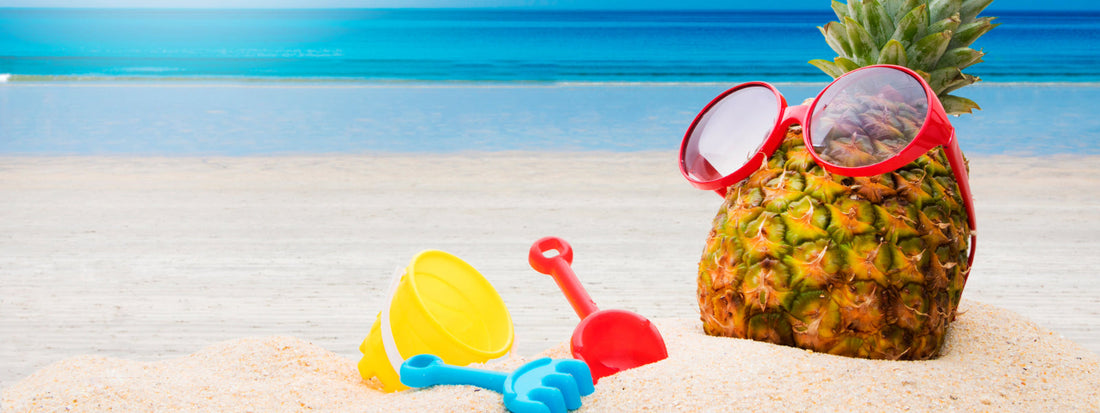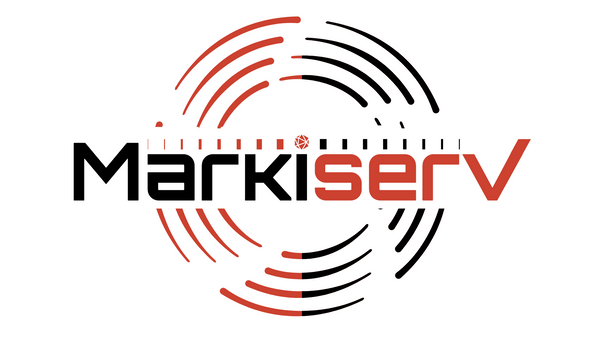
Graphic Design Trends That Will Be Game Changers in Summer 2025
Share
Graphic design is an ever-changing field, constantly shaped by emerging technologies, cultural shifts, and evolving consumer preferences. As we move into Summer 2025, we’re witnessing an exciting transformation in the way design is created, consumed, and integrated into branding, advertising, and digital experiences. Whether you’re a business owner, a freelance designer, or a marketing professional, understanding these trends can help you stay ahead of the competition and create impactful, visually compelling content.
One of the biggest drivers of change in graphic design is technology. Artificial intelligence (AI), augmented reality (AR), and 3D design tools have made high-quality design more accessible than ever, allowing brands to experiment with new creative possibilities. AI-powered tools are helping designers automate repetitive tasks, generate unique visuals, and customize branding materials in ways that were unimaginable just a few years ago. Similarly, AR is bridging the gap between digital and real-world experiences, enabling brands to create immersive marketing campaigns and interactive packaging designs that engage customers on a deeper level.
Another major factor influencing graphic design trends in Summer 2025 is the shift in consumer behavior. With Gen Z and Millennials continuing to dominate the market, brands are leaning into bold, expressive, and nostalgic aesthetics that capture attention on social media. Maximalism, a design movement that embraces vibrant colors, complex patterns, and striking typography, is gaining traction as a reaction to the minimalist trends of the past decade. Consumers are drawn to highly personalized, visually rich content that feels authentic and unique, making brands rethink how they approach storytelling through design.
At the same time, there’s a growing demand for sustainability and inclusivity in design. Eco-conscious branding, minimalist packaging, and ethical design choices are becoming the standard rather than the exception. Companies that embrace sustainable design practices—such as using earth-tone color palettes, biodegradable materials, and transparent messaging—will have a competitive edge in appealing to socially responsible consumers. Inclusivity is also at the forefront, with brands prioritizing designs that represent diverse communities, accessibility-friendly typography, and culturally relevant visuals.
The social media landscape continues to be a major influence on graphic design, pushing brands to create eye-catching, mobile-optimized content that captures attention within seconds. Kinetic typography, motion graphics, and interactive visuals are becoming essential elements of successful social media marketing strategies. With platforms like TikTok and Instagram favoring video content, brands that incorporate animated elements and interactive branding will stand out from the crowd.
Lastly, personalization is reshaping the future of design. AI-powered branding allows businesses to create adaptive logos, custom-generated marketing assets, and even hyper-personalized user experiences. Companies that use data-driven insights to tailor their design strategies will be able to forge stronger connections with their audience, leading to higher engagement and brand loyalty.
With all these trends shaping the industry, Summer 2025 is poised to be one of the most dynamic and innovative seasons in graphic design history. From hyper-realistic 3D graphics and AR experiences to maximalist aesthetics and sustainable branding, designers and businesses must embrace these shifts to stay relevant. In this blog, we’ll explore these game-changing trends in detail and discuss how you can leverage them for maximum impact.
1. Hyper-Realistic 3D Graphics & AI-Assisted Imagery
Three-dimensional (3D) design has been growing in popularity for years, but in 2025, we’re entering an era where hyper-realistic 3D elements and AI-generated visuals dominate. Thanks to improved rendering technologies and AI-assisted tools, designers can create stunningly realistic imagery that blurs the line between digital and reality.
How This Will Change the Game:
Increased Accessibility – AI-driven design platforms allow even small businesses to create high-quality 3D content without extensive technical knowledge.
Engaging Marketing Campaigns – Brands will use hyper-realistic product renders and immersive 3D animations in advertisements, websites, and social media.
Interactive Branding – Expect to see interactive 3D logos and designs that respond to user interactions, enhancing engagement.
🔹 Pro Tip: Designers should start integrating AI-powered tools like Runway ML, MidJourney, or Adobe Firefly to craft AI-assisted 3D imagery.
2. Maximalism: Bold, Loud, and Expressive
Minimalism has been a dominant design trend for years, but in Summer 2025, we’ll see a shift toward Maximalism—a bold, colorful, and expressive style that celebrates over-the-top designs. Think vibrant color palettes, layered typography, clashing patterns, and heavily detailed compositions.
Why This Trend is Exploding:
Social Media’s Influence – Platforms like Instagram and TikTok thrive on eye-catching visuals, making maximalist designs highly shareable.
Gen Z’s Preference for Bold Aesthetics – Younger audiences love nostalgic, high-energy visuals that break conventional design norms.
A Response to AI-Generated Uniformity – As AI tools generate more “perfect” and symmetrical designs, many designers are rebelling with chaotic, artistic maximalism.
🔹 Pro Tip: Don’t be afraid to mix bright colors, bold fonts, and layered imagery to create eye-catching marketing materials.
3. Vintage & Retro Revival – But With a Futuristic Twist
Nostalgia will be huge this summer, with brands embracing ’70s psychedelic designs, ’90s cyber aesthetics, and early 2000s Y2K graphics. However, instead of simply recreating vintage styles, designers will be blending them with futuristic elements—think holographic textures, neon accents, and glitch effects.
How Brands Can Leverage This Trend:
- Logo Redesigns with Retro-Futuristic Elements – Classic typefaces with digital distortions or neon overlays.
- Social Media Aesthetics Inspired by Old Tech – Graphics styled after VHS tapes, CD-ROMs, or early 8-bit video games.
- Web Design Inspired by Vintage UI – Websites adopting a pixelated or retro game-inspired interface while maintaining modern functionality.
🔹 Pro Tip: Use tools like Photoshop’s “Glitch” effects or retro color grading filters to achieve a nostalgic yet futuristic feel.
4. Kinetic Typography & Motion Graphics in Branding
Static text is out. In Summer 2025, kinetic typography and motion-based graphics will redefine brand storytelling. More businesses are realizing that animated text enhances user engagement, especially in mobile-first and video-heavy digital landscapes.
Why Motion Graphics Matter:
- Higher Engagement on Social Media – Text animations capture attention better than static images.
- Stronger Branding – Motion logos and animated typography make brands more memorable.
- Enhanced User Experience – Websites featuring micro-animations improve navigation and keep users engaged.
🔹 Pro Tip: Use software like After Effects or Canva’s animation tools to bring typography to life.
5. Eco-Conscious & Sustainable Design
With climate change and sustainability becoming bigger concerns, eco-conscious graphic design is taking center stage. Brands are prioritizing sustainable packaging, earthy color palettes, and minimalist designs that reflect environmental responsibility.
How This Trend Will Shape Branding in 2025:
- Minimalist, Paper-Like Textures – Simulating natural materials in digital designs.
Muted, Earth-Tone Color Palettes – Forest greens, warm browns, and ocean blues will dominate. - Eco-Friendly Packaging & Branding – Brands will showcase sustainability in their design choices to appeal to environmentally conscious consumers.
🔹 Pro Tip: Choose fonts and color schemes that evoke nature and sustainability to align with this growing movement.
6. Augmented Reality (AR) and Immersive Brand Experiences
Augmented Reality (AR) is no longer a futuristic concept—it’s becoming a mainstream tool in graphic design. Brands are incorporating AR elements into product packaging, online shopping experiences, and interactive ads.
Examples of AR in Graphic Design:
- QR Codes on Packaging – Scanning the package to reveal 3D product information.
- Augmented Reality Business Cards – Scanning a card to unlock an interactive portfolio.
- AR-Enhanced Social Media Filters – Brands using Instagram and Snapchat AR filters to engage audiences.
🔹 Pro Tip: Experiment with AR platforms like Spark AR or 8th Wall to integrate augmented reality into your designs.
7. Personalized & AI-Generated Branding
AI-driven personalization is set to revolutionize how brands interact with their audience. Companies are using AI to create customized logos, adaptive website themes, and dynamic advertisements tailored to user preferences.
Why Personalization is a Game Changer:
- Higher Customer Engagement – Custom-tailored branding creates deeper emotional connections.
- AI-Generated Logos for Different Contexts – Logos that adapt dynamically based on device, season, or user behavior.
- On-Demand Content Creation – AI tools generating personalized images, social media posts, and even email graphics in real time.
🔹 Pro Tip: Use AI-powered design tools like DALL·E, MidJourney, or Looka to explore personalized branding possibilities.
Final Thoughts: Staying Ahead in Graphic Design for Summer 2025
The graphic design landscape is more dynamic than ever, and Summer 2025 is set to be a transformative season for brands, designers, and marketers alike. To stay ahead of the curve, companies must adopt a forward-thinking approach to design—one that balances cutting-edge technology with consumer preferences and brand authenticity.
For businesses, embracing AI-powered design tools and automation will be a game-changer. AI-driven platforms can generate logos, enhance images, and even develop marketing materials at a fraction of the time and cost compared to traditional methods. However, while AI can enhance efficiency, human creativity remains irreplaceable. The best results will come from a hybrid approach, where designers use AI as a tool to push creative boundaries rather than replace their expertise.
Social media and digital marketing will also be crucial in leveraging motion graphics, kinetic typography, and AR-powered experiences. Brands that invest in interactive content will have a significant advantage, as users engage more with dynamic visuals than with static images. Whether through Instagram stories, TikTok ads, or website animations, motion-based design will drive engagement and conversions.
Additionally, branding strategies must evolve to align with the preferences of modern consumers. With sustainability and inclusivity being major concerns, brands must focus on creating designs that reflect ethical values and environmental responsibility. Companies that prioritize sustainable design practices—such as using recycled materials, choosing eco-friendly color schemes, and reducing excess packaging—will gain consumer trust and long-term loyalty. Similarly, inclusive design choices, such as accessible fonts, diverse representation, and culturally aware visuals, will make branding more impactful and relatable.
Another key takeaway from these upcoming trends is the importance of personalization. With AI-driven marketing becoming more sophisticated, businesses will have the ability to tailor their branding to individual customers. Adaptive logos, personalized product packaging, and dynamic website experiences will create stronger connections with audiences and enhance brand engagement. The companies that succeed in Summer 2025 will be those that make consumers feel seen, understood, and valued through their design choices.
Moreover, businesses should not underestimate the power of nostalgia in marketing. By blending vintage aesthetics with modern technology, brands can create designs that evoke emotional connections while still feeling fresh and contemporary. This fusion of old and new is a strategy that resonates particularly well with younger generations who appreciate retro-inspired visuals but also demand digital sophistication.
As we look ahead, one of the biggest challenges in graphic design will be standing out in an oversaturated market. With so many brands competing for attention, only those that push creative boundaries and experiment with new design techniques will succeed. Companies should be willing to test unconventional ideas, take creative risks, and explore new visual storytelling methods to differentiate themselves.
In conclusion, the graphic design trends for Summer 2025 are bold, immersive, and deeply influenced by technology and cultural shifts. Brands and designers that embrace 3D hyper-realism, AI-driven personalization, maximalist aesthetics, motion graphics, AR experiences, sustainability, and nostalgia-infused visuals will have a competitive edge. By staying adaptable and innovative, businesses can ensure that their branding remains relevant, engaging, and visually striking in this rapidly evolving digital era.
What do you think will be the most impactful graphic design trend of Summer 2025? Share your thoughts in the comments! 🚀
Helpful Links to Learn More:
-
Adobe's Design Trends 2025: Adobe provides insights into the top 10 graphic design trends predicted to be popular in 2025, including AI-powered design and handcrafted elements.
-
GraphicMama's Top 10 Graphic Design Trends in 2025: This article discusses trends such as conceptual & abstract design, storytelling animation, and emotion-powered characters.
-
Creative Bloq's Graphic Design Trends to Watch in 2025: Explore the emerging trends and the growing countermovement celebrating human imperfection and authentic expression.
